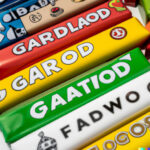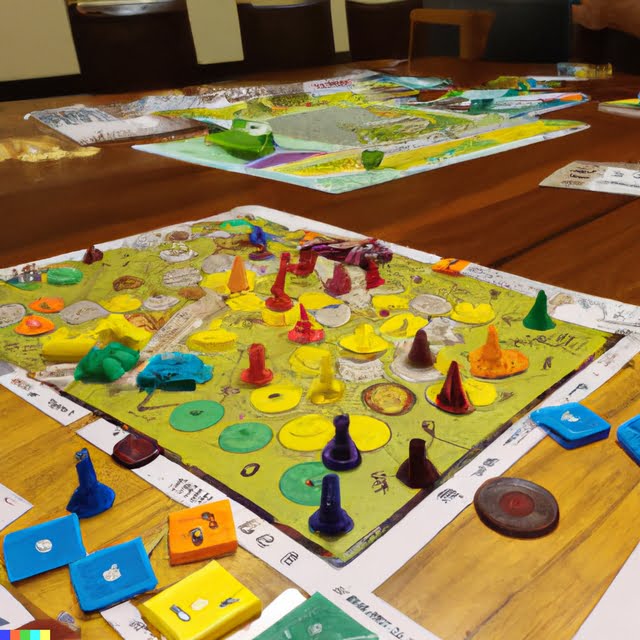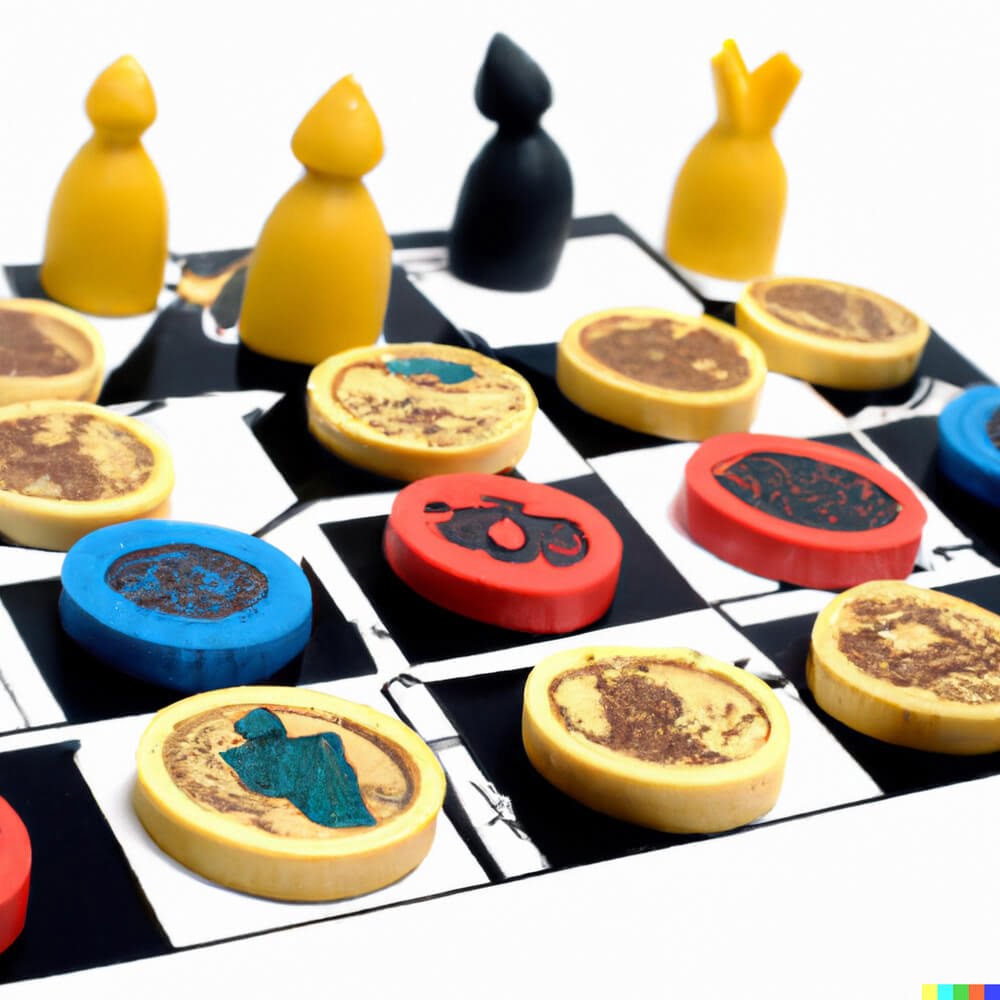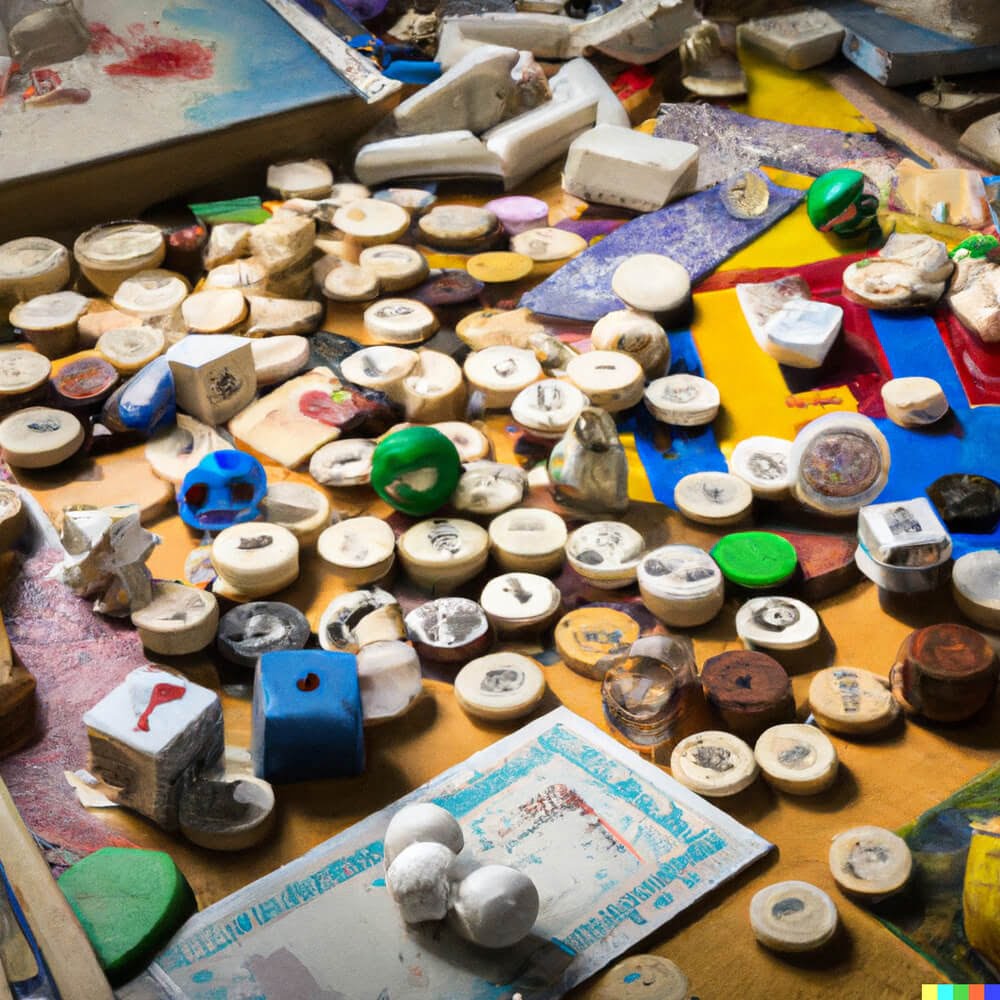Introduction
Making an action board game can be a fun and creative way to spend your spare time. Before you begin, it’s important to think about how complex the game should be and decide on the theme of the game. You’ll also need to determine who will play it and figure out how many players the game allows. Once you have an idea for your game, gather the necessary materials such as cardboard, markers, scissors and pieces of foam or plastic.
Next, you’ll need to design your game using graph paper or software like Adobe Illustrator. Draw each element of your board game on paper including all special features, numbers and directions. Make sure to include all applicable rules and regulations as well. If there are miniatures involved in the playing of the game, ensure that they look right; if characters have firearms, make sure their arms are in a position to adequately hold them.
Once your design is complete, print out your drawing onto cardstock paper or use the software again if necessary. Cut up the pieces with scissors or a cutting machine and lay them on top of cardboard over which you will glue each piece to create your boardgame baseboard. Also cut out any figures for characters with them as well before gluing them down onto another piece of stiff cardboard layer; connect these characters with tiny rods so that they can stand upright when playing the game.
Once your basic structure is ready and complete make sure everything matches up properly with exact measurements – pay attention especially when creating puzzles! Finally create any other miscellaneous materials such as dice or playing cards needed for gameplay; check if printed components need to be laminated so they’re waterproof and more durable as this may become essential depending on usage/location intended for playtime!
Gather the Necessary Supplies and Materials
Before beginning your action board game, it is important to ensure that you have all of the necessary supplies and materials. This includes items such as cardstock, markers, scissors, dice, playing pieces, a ruler, or anything else that you might need depending on what type of game you are creating. If you are having trouble finding certain items for your game, check online stores or local craft stores for exactly what you need. Additionally, consider using recycled materials like cardboard boxes and other items from around the house when possible. Having these supplies handy will save time during the creative process.
Setting the Rules and Prerequisites
Before you can start designing and manufacturing your own action board game, it is important to set the rules and prerequisites. Think about what kind of objectives players should be expected to complete, whether those objectives have a specific time limit or duration, and what kind of obstacles or challenges the players might encounter during their journey. Consider the theme of your game”is it a sci-fi adventure or something more abstract? Once you have settled on a theme, you can then determine appropriate rules that keep gameplay within the confines of that setting. For instance, if this is a fantasy game with magic spells, make sure that every spell card has different effects and there are no duplicates allowed. Decide also how many players can participate in the game at once; two is usually enough but allow up to four if desired. Additionally, decide if there will be special abilities for some characters or if everyone has the same ones. Items collected within the game should also have an effect on its outcome; chances are players will want to come back again and again if they get different results each playthrough!
Choosing a Theme or Idea for the Board
The most important thing when you’re creating an action board game is to decide on a theme or idea. This will provide the basis for your game, from determining how it should look to what sorts of challenges and obstacles are presented to the players. Depending on what type of game you want to create, the theme can vary widely; for instance, you could use a classic story as your inspiration, like Harry Potter or Game of Thrones, or incorporate characters from comic books and movies. Other possibilities include inventing a unique fantasy setting or basing the game around mythical creatures or historical events. Depending on the age group and skill level of the players, there are also plenty of educational games that teach geographical facts and knowledge about different regions or continents. When deciding on an appropriate theme for your board game design, consider the personal interests and skillset of the people who will be playing it!
Building the Physical Board
Making an action board game can be a fun and creative way to entertain yourself and your friends. Building the physical board is the first step in the process. Depending on how much time and effort you want to put into it, the board can be as complex or simple as you’d like. To start, find a large piece of scrap cardboard or plywood that will serve as your playing surface. You can then draw out a design or use stencils if you prefer something more detailed. Decorate the board with paints, markers, or stickers; get creative! Next, build out pieces such as tokens, dice, and score cards. You may also choose to make some objects like figurines for players to move around or even 3D structures where players can battle at certain points in the game. Lastly, place any rewards that would give players something special when they reach certain objectives during gameplay. Add enough pieces and rewards that players have plenty of options while they are playing.
Creating the Pieces and Tokens to Use in the Game
To make an action board game, you need to create pieces and tokens for the players to use during their turns. One of the simplest ways to make these pieces is by creating cardboard cutouts. This can be done with a craft knife or scissors. You will also need some markers and colored pencils so you can give the figures different colors, shapes, sizes, and designs. Additionally, you may want to create special tokens that represent in-game benefits like extra turns, bonuses, or power-ups. These tokens can either be paper-pasted die cuts or 3D plastic figurines.
For a more advanced experience, you could use 3D printing technology to created custom 3D models for the characters or other in-game objects. This will require access to a 3D modelling program and a 3D printer but it would add an extra level of detail and realism to your game. You could even upload your handcrafted figures online so others can download them and use them in their own games! The options are endless when it comes to making your game’s pieces truly unique.
Structuring the Gameplay Mechanics
When it comes to designing the gameplay mechanics for an action board game, there are a few key components that must be taken into consideration. Firstly, decide on the main objective of the game, as well as any rules or limitations that should be enforced during game play. Choose which pieces (e.g. cards, dice, tokens) will be needed for the game and decide how they should interact with each other. Establish a timeline for in-game events such as item collection, player turns/actions and rewards. Additionally, consider if any special ‘power-ups’ or bonuses should be included to diversify the game environment and determine their availability so that all players have fair access to them regardless of skill level or experience. Finally, craft a set of instructions detailing exactly how each element of the game works ” this is essential for ensuring proper understanding of the goals and gameplay mechanics before starting!
Playtesting and Refining the Rules
Once you have the foundation created for your board game, it is time to start play testing. There will likely be some flaws in the foundation or aspects that need further detail or refinement. Invite a few friends and colleagues to join you for a playtest session and invite their feedback as you work through each turn and challenge. Explain the rules clearly, listen carefully to any suggestions, note any problems during the game, and adjust as necessary. If possible, make sure that there are multiple test sessions to refine the rules enough so that they can be settled before launching a full-scale product.
Once the basic rules are established after playtesting them, it’s time to focus on refining other aspects of your board game experience such as cost considerations, design elements (board layout, artwork), marketing strategy (is brand recognition important?) and other factors related to production. This also includes details such as box sizes and packing materials which may seem small but have major repercussions in regards to overall cost of production. Make sure these details are given attention as they could affect both cost of production and sales numbers. Additionally look at refining the social media presence or marketing strategy; consider giving out free plays of the board game at conventions or events in order to get organic publicity from real players who can share their experiences with friends. Most importantly when developing your action board game make sure to pay attention to copyright laws; seek official legal advice if there are any questions regarding intellectual property rights connected with your project before printing out any copies made available commercially.
Creating the Final Printable Version of the Game
Once you have designed, tested and tweaked your action board game to perfection, it is time to create the final printable version that can be used to play. Before you print your game, make sure you preview all of the files on a computer monitor or large tablet screen to double-check for any changes or fixes that need to be made before printing. Also, consider using a professional printing service rather than printing at home so that you can achieve the best possible quality results with your board game and all its accompanying pieces.
The type of printer and the material used must also be taken into consideration when creating a final version of your game. Invest in good quality card stock paper as this is heavier than normal paper and more resistant to damage if rough handling occurs during gaming sessions. Additionally, consider using thicker card boards for more robust cards as well as plastic components such as dice, spinners or game pieces if required by your design. Finally, ensure that all of your printed materials are correctly aligned in order for the parts to fit together correctly when assembled. You may need to use trial and error with different types of printers and materials before achieving a desired result.
Adding Visual Enhancements such as Bonus Artwork
A bonus to making your own action board game is the ability to add visual enhancements, such as bonus artwork. For example, you can create a custom board with scenery that corresponds to satisfying the goal of your game and make it more visually appealing. This can be completed by utilizing various colors in labeling areas on the board, as well as drawing pictures or sketches around its perimeter. Furthermore, if budget allows and you’re feeling especially creative, 3D-printed items can be used to add features like little figurines or objects to give your game a more engaging touch. Lastly, you can create miniature replicas of items that relate to your game even further so players have something physical they can interact with during their playthroughs.
Concluding Thoughts on Making an Action Board Game
Making an action board game can be a fun way to spend time with family and friends. In most cases, the process will involve several steps including designing game mechanics, coming up with a theme, creating artwork, and assembling the pieces. Though it may seem daunting initially, many have found making an action board game to be rewarding in the end. After all the hard work has been done designing the game, bringing it together is always an exciting moment!
Once your action board game is ready for play testing and reviews by friends or family you should take their advice into account if there is any constructive criticism that could help you make improvements or tweaks to gameplay etc. Also depending on how much fun everyone had when playing your game you could even consider going one step further and releasing your finished product for sale. Additionally if your action board game got good reviews from those who tested it then you could think about submitting it to bigger video games companies like Hasbro or Asmodee for distribution. It’s also worth mentioning that marketing your board game really helps when looking at getting more exposure of your creation which could potentially make sales skyrocket if handled correctly. With just a little bit of effort and time, you could make a great actionboard game ” no matter what type of game system you decide to create!

I love playing all kinds of games – from classics like Monopoly to modern favourites like Ticket to Ride.
I created this blog as a way to share my love of board games with others, and provide information on the latest releases and news in the industry.





